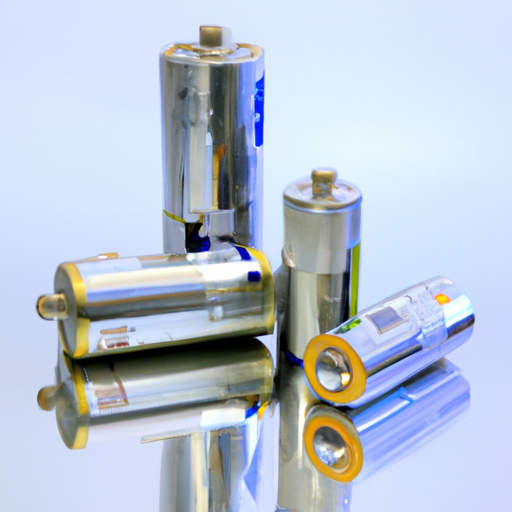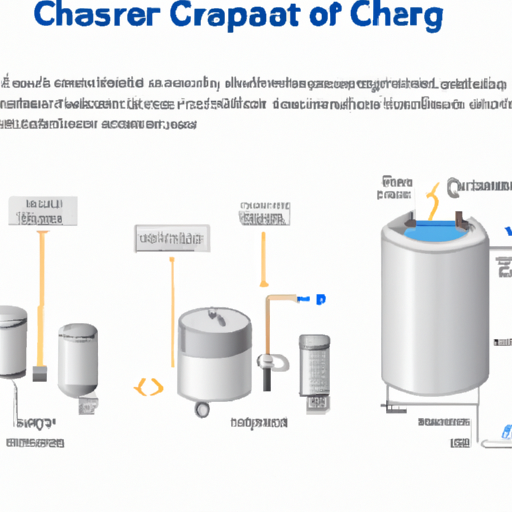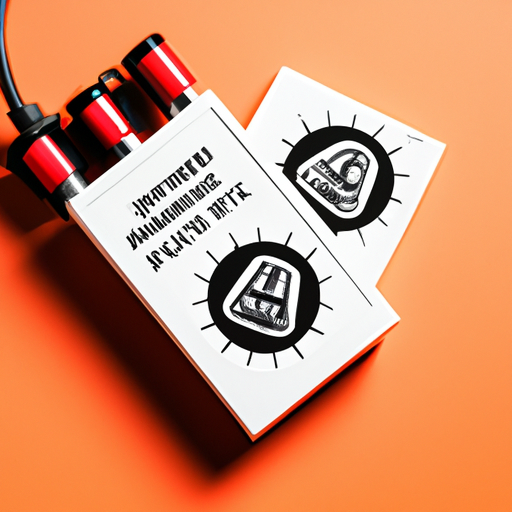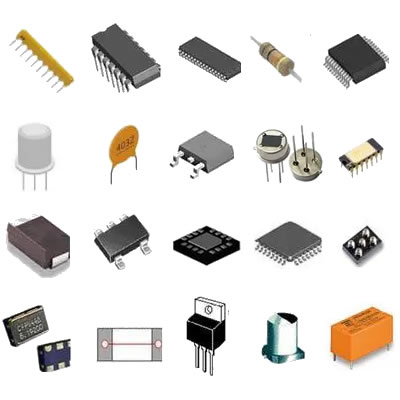An article will help you understand what tantalum capacitors are
Understanding Tantalum Capacitors
I. Introduction
Tantalum capacitors are a type of electrolytic capacitor that utilize tantalum metal as the anode. Known for their high capacitance values and compact size, these capacitors play a crucial role in modern electronic circuits. Their unique properties make them indispensable in various applications, from consumer electronics to aerospace technology. This article aims to provide a comprehensive understanding of tantalum capacitors, exploring their history, composition, working principles, advantages, disadvantages, applications, and future trends.
II. History of Tantalum Capacitors
The story of tantalum capacitors begins with the discovery of tantalum itself, a rare metal first identified in 1802 by Swedish chemist Anders Ekeberg. Tantalum's unique properties, including its high melting point and excellent corrosion resistance, made it an attractive candidate for various industrial applications.
The development of tantalum capacitors began in the mid-20th century, with the first commercial tantalum capacitors introduced in the 1950s. These capacitors quickly gained popularity due to their superior performance compared to traditional aluminum electrolytic capacitors. Over the decades, advancements in manufacturing techniques and materials have led to the evolution of tantalum capacitors, expanding their applications in electronics.
III. Composition and Structure
A. Materials Used in Tantalum Capacitors
1. **Tantalum Metal**: The primary material used in tantalum capacitors is tantalum metal, which serves as the anode. Tantalum is chosen for its excellent electrical properties and ability to form a stable oxide layer, which acts as the dielectric.
2. **Dielectric Materials**: The dielectric in tantalum capacitors is typically formed from a thin layer of tantalum pentoxide (Ta2O5), which is created through an anodization process. This oxide layer is crucial for the capacitor's ability to store electrical energy.
B. Physical Structure
1. **Types of Tantalum Capacitors**: Tantalum capacitors can be categorized into two main types: solid tantalum capacitors and tantalum electrolytic capacitors. Solid tantalum capacitors use a solid electrolyte, while tantalum electrolytic capacitors use a liquid electrolyte.
2. **Packaging and Form Factors**: Tantalum capacitors are available in various packaging styles, including surface-mount and through-hole configurations. Their compact size allows for high capacitance values in small form factors, making them ideal for space-constrained applications.
IV. Working Principle
A. Basic Principles of Capacitance
Capacitance is the ability of a component to store electrical energy in an electric field. In a capacitor, this energy is stored when a voltage is applied across its terminals, causing a separation of charge.
B. How Tantalum Capacitors Store and Release Energy
In tantalum capacitors, when a voltage is applied, electrons accumulate on the tantalum anode, while positive ions migrate to the dielectric layer. The resulting electric field across the dielectric allows the capacitor to store energy. When the voltage is removed, the stored energy can be released back into the circuit.
C. Comparison with Other Types of Capacitors
Tantalum capacitors offer several advantages over other types of capacitors, such as ceramic and aluminum capacitors. They provide higher capacitance values in smaller sizes, better stability over temperature and voltage variations, and improved reliability. However, they are generally more expensive and can be sensitive to over-voltage conditions.
V. Advantages of Tantalum Capacitors
A. High Capacitance per Volume
One of the most significant advantages of tantalum capacitors is their high capacitance per unit volume. This allows designers to incorporate high-capacitance components into compact electronic devices without sacrificing performance.
B. Stable Electrical Characteristics
Tantalum capacitors exhibit stable electrical characteristics over a wide range of temperatures and voltages. This stability is crucial for applications requiring consistent performance, such as precision instruments and medical devices.
C. Reliability and Longevity
Tantalum capacitors are known for their reliability and long lifespan. They are less prone to failure compared to other capacitor types, making them suitable for critical applications where failure could have severe consequences.
D. Temperature and Voltage Stability
Tantalum capacitors maintain their performance across a broad temperature range and are less affected by voltage fluctuations. This stability is essential in applications where environmental conditions can vary significantly.
VI. Disadvantages of Tantalum Capacitors
A. Cost Considerations
One of the primary drawbacks of tantalum capacitors is their cost. The price of tantalum metal can be high due to its rarity, making tantalum capacitors more expensive than alternatives like aluminum or ceramic capacitors.
B. Sensitivity to Voltage and Temperature
While tantalum capacitors are stable under normal operating conditions, they can be sensitive to over-voltage and extreme temperature variations. Exceeding the specified voltage rating can lead to catastrophic failure, including short circuits and thermal runaway.
C. Risk of Failure Modes
Tantalum capacitors can fail in several ways, including short circuits and thermal runaway. These failure modes can pose risks in sensitive electronic applications, necessitating careful design considerations and protective measures.
VII. Applications of Tantalum Capacitors
A. Consumer Electronics
Tantalum capacitors are widely used in consumer electronics, including smartphones, tablets, and laptops. Their compact size and high capacitance make them ideal for power management and filtering applications.
B. Telecommunications
In telecommunications, tantalum capacitors are employed in devices such as routers, switches, and base stations. Their reliability and stability are critical for maintaining signal integrity and performance.
C. Automotive Industry
The automotive industry utilizes tantalum capacitors in various applications, including engine control units, infotainment systems, and safety features. Their ability to withstand harsh environmental conditions makes them suitable for automotive applications.
D. Medical Devices
Tantalum capacitors are essential in medical devices, where reliability and precision are paramount. They are used in equipment such as pacemakers, imaging systems, and diagnostic devices.
E. Aerospace and Military Applications
In aerospace and military applications, tantalum capacitors are valued for their reliability and performance in extreme conditions. They are used in avionics, satellite systems, and defense electronics.
VIII. Selection Criteria
A. Factors to Consider When Choosing Tantalum Capacitors
1. **Capacitance Value**: The required capacitance value will depend on the specific application and circuit requirements.
2. **Voltage Rating**: It is crucial to select a tantalum capacitor with a voltage rating that exceeds the maximum voltage it will encounter in the circuit.
3. **Size and Form Factor**: The physical size and form factor of the capacitor should align with the design constraints of the electronic device.
4. **Environmental Considerations**: Consideration of the operating environment, including temperature and humidity, is essential for ensuring reliable performance.
B. Common Manufacturers and Product Lines
Several manufacturers produce tantalum capacitors, including KEMET, Vishay, and AVX. Each company offers a range of products tailored to different applications and specifications.
IX. Future Trends and Innovations
A. Advances in Materials and Technology
Research and development in materials science are leading to innovations in tantalum capacitor technology. New materials and manufacturing techniques aim to enhance performance, reduce costs, and improve reliability.
B. Emerging Applications in New Fields
As technology evolves, tantalum capacitors are finding new applications in emerging fields such as renewable energy, electric vehicles, and Internet of Things (IoT) devices. Their unique properties make them well-suited for these applications.
C. Sustainability and Recycling Considerations
With growing concerns about sustainability, the recycling of tantalum capacitors is becoming increasingly important. Efforts are underway to develop more sustainable manufacturing processes and recycling methods to minimize environmental impact.
X. Conclusion
Tantalum capacitors are a vital component in modern electronics, offering high capacitance, stability, and reliability. Their unique properties make them suitable for a wide range of applications, from consumer electronics to aerospace technology. As technology continues to advance, tantalum capacitors will play an essential role in shaping the future of electronic design. Understanding their characteristics, advantages, and limitations is crucial for engineers and designers looking to leverage their benefits in various applications. We encourage further exploration and understanding of tantalum capacitors to fully appreciate their significance in the world of electronics.
XI. References
1. "Tantalum Capacitors: A Comprehensive Guide." KEMET Electronics Corporation.
2. "The Role of Tantalum Capacitors in Modern Electronics." Vishay Intertechnology.
3. "Advancements in Tantalum Capacitor Technology." AVX Corporation.
4. "Understanding Capacitors: Types, Applications, and Selection." IEEE Xplore.
5. "Sustainability in Electronics: The Future of Tantalum Capacitors." Journal of Electronic Materials.
This article provides a thorough overview of tantalum capacitors, highlighting their importance in the electronics industry and encouraging further exploration of this fascinating topic.






